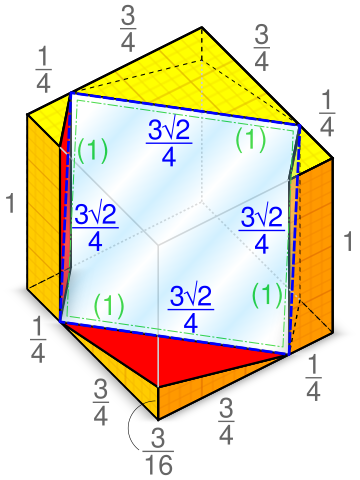
In the 17th century, Prince Rupert of the Rhine wondered whether one cube might pass through another of the same size. John Wallis showed that the answer is yes, and, perversely, Pieter Nieuwland showed a century later that one cube can even accept another larger than itself — fully 6 percent larger in the optimal case. The diagram above shows the dimensions (blue) of a square tunnel through a unit cube that will accommodate a second unit cube (green) with room to spare.
Remarkably, all five Platonic solids have the “Rupert property” — a regular tetrahedron, for example, will fit through an identical tetrahedron if the hole is contrived cleverly enough. Whether every convex polyhedron can perform this unlikely feat is an open question.
